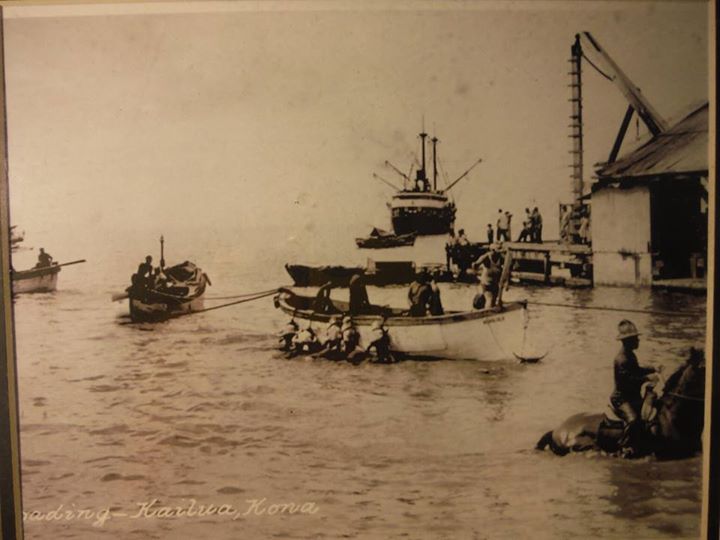With the arrival of Western ships, new plants and animals soon found their way to the Hawaiian Islands.
The simple‐seeming gift of a few cattle given to Kamehameha I by Captain George Vancouver in 1793 made a major impact on the Hawai`i’s economy and ecosystem.
Having never seen animals with horns before, the Hawaiian called them pua‘a pepeiaohao, literally “pigs with iron ears.”
It also spawned a rich tradition of cowboy and ranch culture that is still here today.
Spaniards introduced the first cattle to Veracruz, Mexico in 1521. Vancouver picked up descendants of these animals from the Spanish mission in Monterey when he set off across the Pacific, intending to use them as food and gifts.
Cattle were not the only animals introduced to Hawai`i during this period. In 1778, Captain Cook left both goats and pigs.
British introduced sheep in the 1790s and they all soon roamed on Mauna Kea and Hualālai. In 1803, American Richard Cleveland presented horses ‐ a stallion and a mare ‐ to Kamehameha.
When Vancouver landed additional cattle at Kealakekua in 1794, he strongly encouraged Kamehameha to place a 10‐year kapu on them to allow the herd to grow.
In the decades that followed, cattle flourished and turned into a dangerous nuisance. By 1846, 25,000-wild cattle roamed at will and an additional 10,000-semi‐domesticated cattle lived alongside humans.
A wild bull or cow could weigh 1,200 to 1,500-pounds and had a six‐foot horn spread. Vast herds destroyed natives’ crops, ate the thatching on houses, and hurt, attacked and sometimes killed people.
Kamehameha III lifted the kapu in 1830 and the hunting of wild cattle was encouraged. The king hired cattle hunters from overseas to help in the effort; many of these were former convicts from Botany Bay in Australia.
Hunting sometimes ended in inadvertent tragedy. In 1834, the trampled dead body of Scottish botanist David Douglas, for whom the Douglas Fir tree is named, was discovered in a cattle-trap pit on Mauna Kea.
Hawaiʻi’s wild cattle population needed to be controlled for safety reasons, but the arrival of cattle hunters and Mexican vaquero (“Paniolo”) also happened to coincide with an economic opportunity.
In the early-1830s, trade in sandalwood slowed down as island forests became depleted. At about the same time, whaling ships hunting in the north Pacific began wintering in Hawaiian waters.
Ships provisioning in Hawaiʻi ports provided a market for salt beef, in addition to hides and tallow. With the economic push of providing provisions to the whaling fleets, ranching became a commercial enterprise that grew in the islands.
Cattle ranching remains an important export and food industry in Hawai‘i. Currently, ranchers provide calves for finishing on the mainland and produce cattle for local consumption.
Cattle are Hawaii’s third most valuable agricultural commodity, worth about $44.8 million in 2017, though a history of having to respond to the whims of greater market forces has forced ranchers to constantly adapt to new changes in the supply chain. And for the past 30 years, cow-calf operations have been the best way for ranchers to make a living.
In 2019-2020, Idaho billionaire Frank VanderSloot assumed the leases for and purchased the slaughterhouses on O’ahu near Kapolei and on the Big Island in Paauilo, which together account for 70% of the state’s animal harvest capacity.
VanderSloot, founder of wellness company Melaleuca (the largest online wellness shopping club), recently completed upgrades to the O’ahu operation and work on the Big Island facility is underway. (Civil Beat)
When living in Waimea, I had a brief experience in “ranching.”
We picked up a day-old dairy bull calf from an Āhualoa dairy; we named him “Freezer Burn.” We removed the middle seat and transported him back home in our VW van. (I know; real cowboys don’t name their steers.)
After bottle-feeding him and briefly pasturing him, he ditched the premises and hooked up with part of the Parker Ranch herd.






















